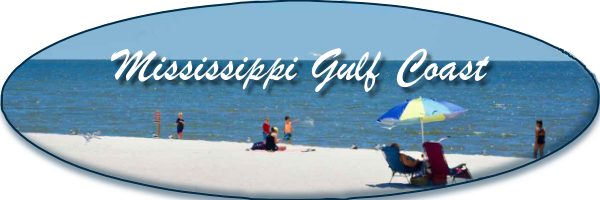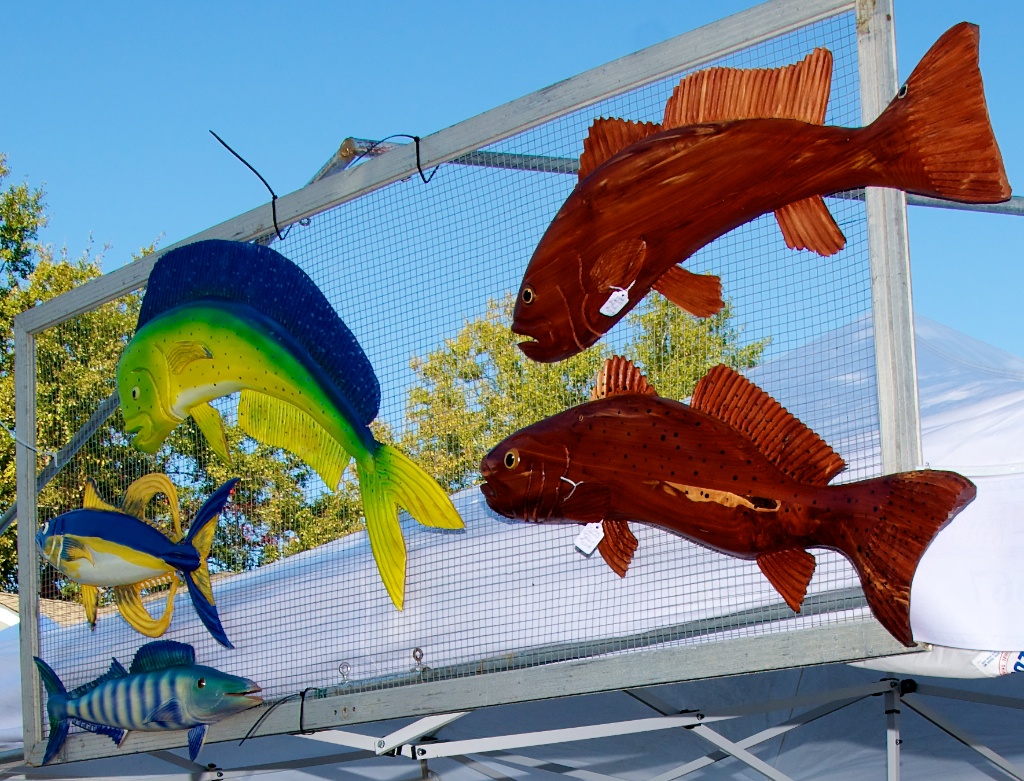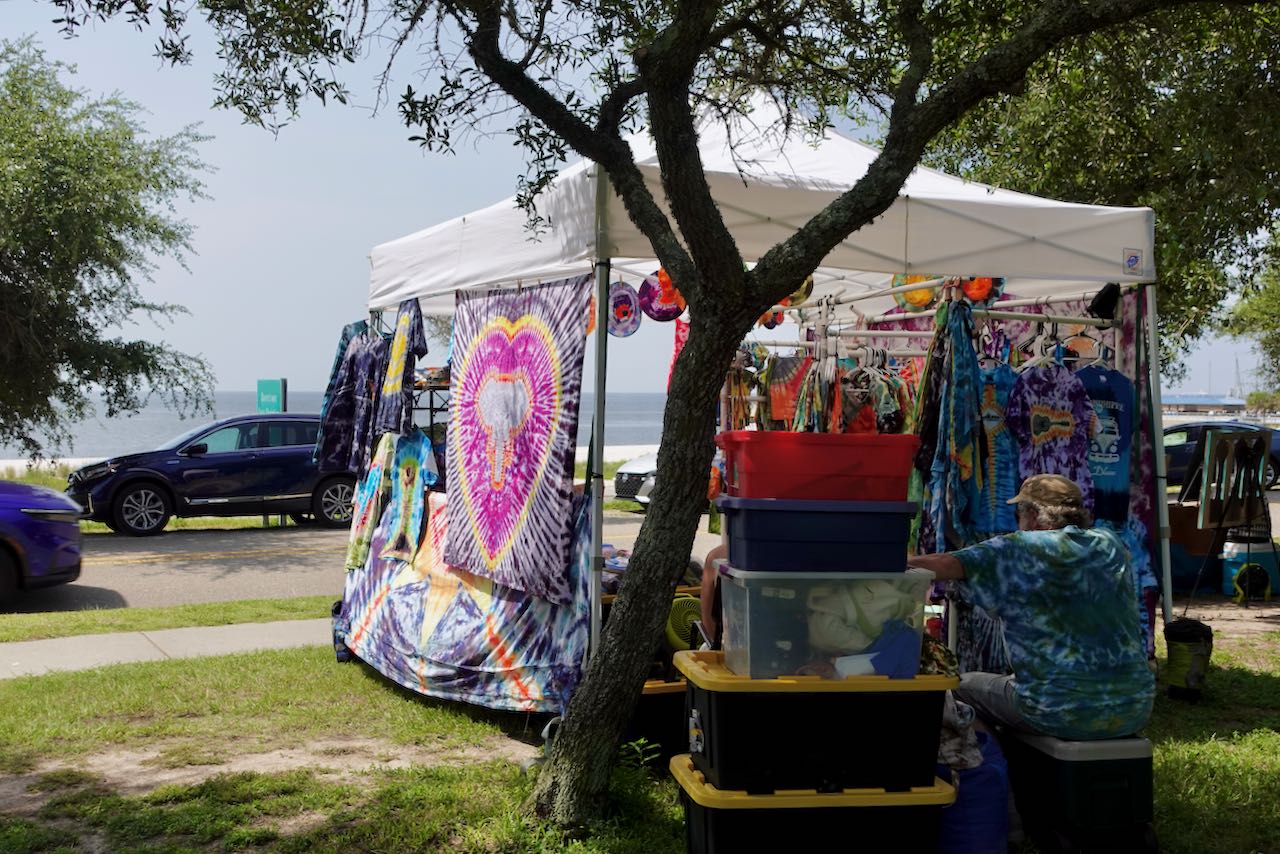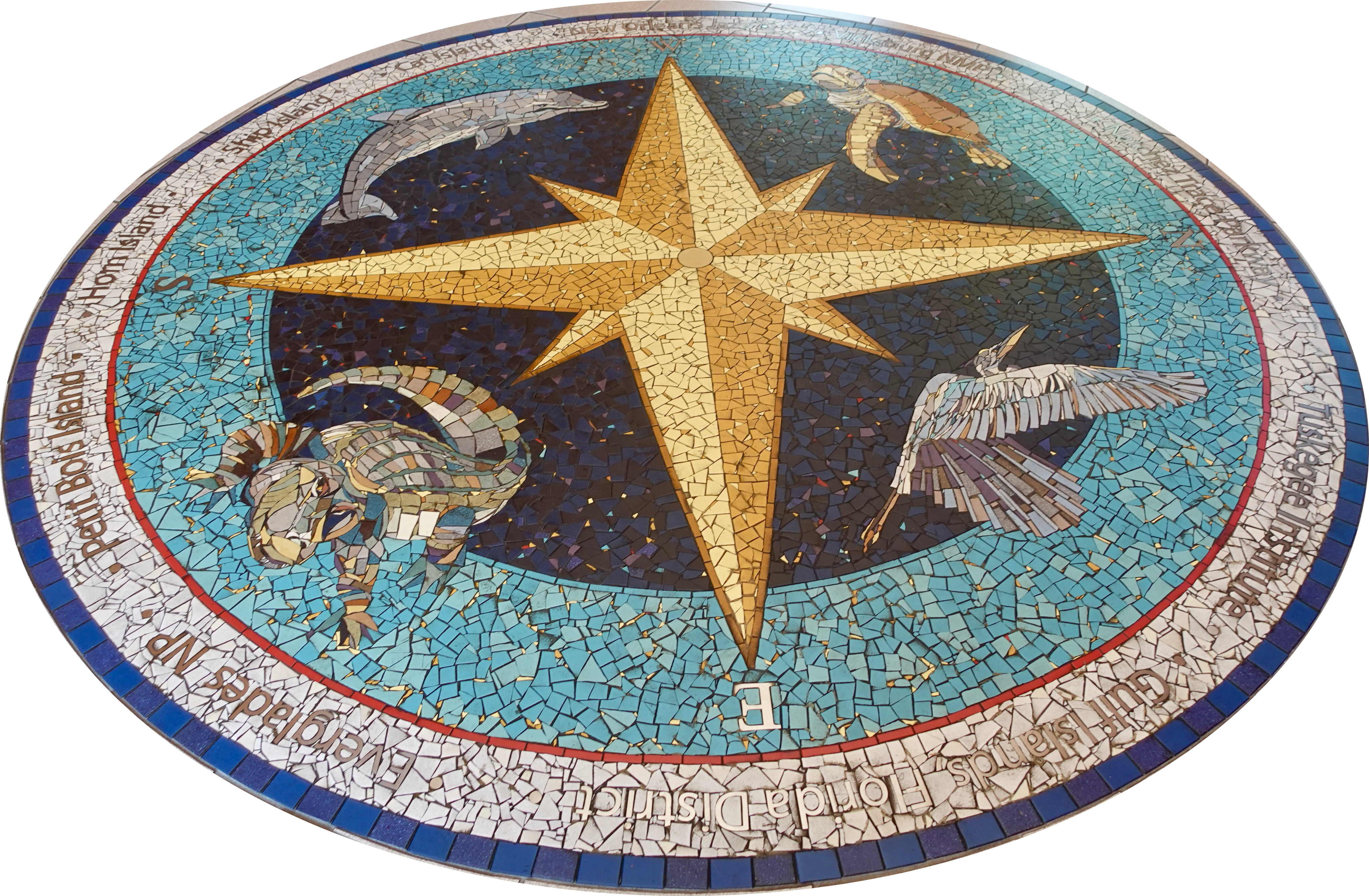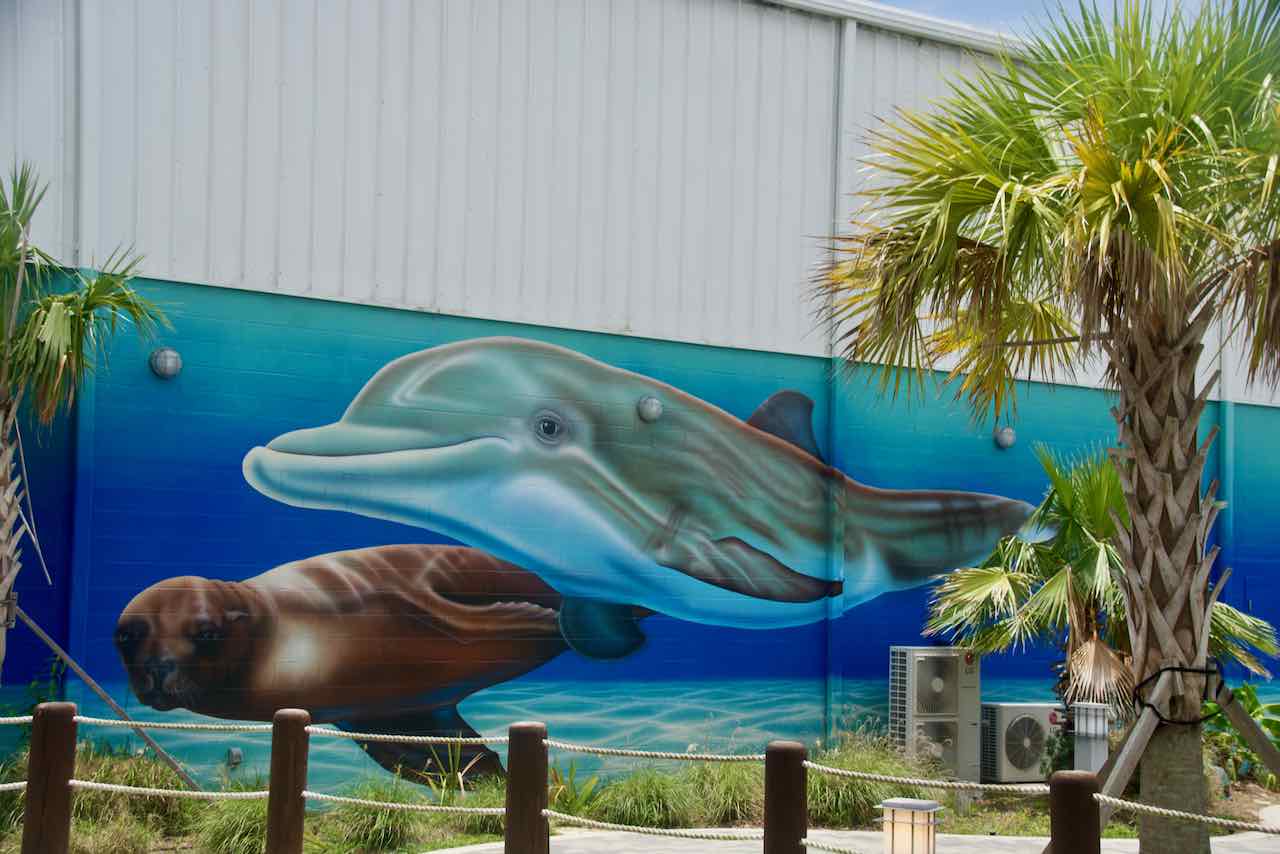

Commons


Commerce


Come See!
From Wikipedia, the free encyclopedia
Ocean Springs, Mississippi
| Nickname: City of Discovery | |
| Location of Ocean Springs, Mississippi | |
| Ocean Springs, Mississippi Location in the contiguous United States | |
Coordinates: 30°24′36″N 88°47′51″W | |
| Country | United States |
| State | Mississippi |
| County | Jackson |
| Unofficially incorporated (settlement) | April 1699 |
| Incorporated (village) | 1843 |
| Incorporated (city) | September 9, 1892 |
Government | |
| • Type | Mayor-council |
| • Mayor | Kenny Holloway (R) |
| • Aldermen | Jennifer Burgess Rickey Authement Kevin Wade Ken Papania Robert Blackman Michael Impey Bobby Cox |
Area | |
| • Total | 15.21 sq mi (39.38 km2) |
| • Land | 11.55 sq mi (29.92 km2) |
| • Water | 3.66 sq mi (9.47 km2) |
| Elevation | 23 ft (7 m) |
Population (2020) | |
| • Total | 18,429 |
| • Density | 1,595.58/sq mi (616.04/km2) |
| Time zone | UTC−6 (Central (CST)) |
| • Summer (DST) | UTC−5 (CDT) |
| ZIP codes | 39564-39566 |
| Area code | 228 |
| FIPS code | 28-53520 |
| GNIS feature ID | 675137 |
| Website | www.oceansprings-ms.gov |
Ocean Springs
is a city in Jackson County, Mississippi, United States, approximately 2 miles (3.2 km) east of Biloxi and west of Gautier. It is part of the Pascagoula, Mississippi Metropolitan Statistical Area. The population was 18,429 at the 2020 U.S Census, down from 18,434 in 2010.
The town has a reputation as an arts community and is a popular tourist destination. The town was voted as a top 10 Happiest Seaside Town by Coastal Living in 2015 and was also voted as a top 10 Best Coastal Small Town by USA Today in 2022. Its historic and secluded down town area, with streets lined by live oak trees, is home to several art galleries, shops, restaurants, and bars.
Ocean Springs was the home town of the late Walter Inglis Anderson, a nationally renowned painter and muralist who drew inspiration from the natural coastal landscape and nearby barrier islands. The town hosts several festivals throughout the year, including its Peter Anderson Festival, one of the Southeast’s premiere arts and crafts festivals.
Ocean Springs was severely damaged on August 29, 2005, by Hurricane Katrina, which destroyed many buildings along the shoreline, including the Ocean Springs Yacht Club, and the wooden replica of Fort Maurepas, and gutted or flooded other buildings. Katrina’s 28 ft (8.5 m) storm surge also destroyed the Biloxi Bay Bridge, which connected Biloxi to Ocean Springs.
History

Ocean Springs: Government Street
The settlement of Fort Maurepas or Old Biloxi, in colonial French Louisiana (New France), began in April 1699 at present-day Ocean Springs, under the authority of King Louis XIV, as Fort Maurepas by Pierre Le Moyne d’Iberville. It was the first permanent French outpost in French Louisiana and was established as a foothold to prevent Spanish encroachment on France’s colonial claims. The site was maintained well into the early 18th century.
The town was briefly called Lynchburg Springs when the first post office was established in 1853. The name Ocean Springs was coined by Dr. William Glover Austin in 1854. He believed the local springs had healing qualities. Ocean Springs became a prosperous resort town and after several years reinvented itself as a historically-oriented residential community. The history of the town is celebrated annually in re enactments depicting d’Iberville’s landing near a replica of Fort Maurepas. The authorities had authorized John Egan to construct and operate a public wharf near this ancient fort site at the foot of Jackson Avenue prior to the Civil War.
From colonial times to present day, seafood has been celebrated. The abundance of seafood allowed French and French-Canadian explorers and settlers to thrive within the Fort Maurepas/Old Biloxi area. In the late nineteenth century, the development of ice plant industries along the coast increased seafood sales. Locals and tourists can still purchase freshly harvested shrimp, fish, crabs, and oysters to this day because of this thriving industry.
Ocean Springs was in the international spotlight following Hurricane Katrina’s landfall on August 29, 2005. The city, part of the Mississippi Gulf Coast directly hit by the storm, sustained significant damage. The Biloxi-Ocean Springs bridge, part of Highway 90 along the beach, was destroyed and was a widely broadcast visual testament to the hurricane’s impact.
Biloxi Bay Bridge

Biloxi Beach
Hurricane Katrina‘s 28-foot (8.5 m) storm surge destroyed the Biloxi Bay Bridge on August 29, 2005, which connected Biloxi to Ocean Springs. The bridge was completed in 1962, and damaged in 1969 by Hurricane Camille. The Biloxi Bay Bridge replaced the aging War Memorial Bridge which opened in 1930. As of 2007, the majority of the bridge’s remains have been removed via cranes based on barges located next to the bridge debris. The bridge ruins, capturing the breathtaking results of the force of Hurricane Katrina, had become a popular spot of photographers both professional and amateur. The construction for the new bridge was completed in April 2008. The new Biloxi Bay Bridge is 95′ in height at its main span, and supports six lanes of traffic. Two lanes of the six-lane bridge opened November 1, 2007. The new bridge has a curving roadway due to the implemented design-build process. In order to speed the process of rebuilding, the main body of the bridge was moved outside of the previous bridge’s debris area. The landing points for each side of U.S. Route 90 correspond with the previous bridge.
Geography and climate
According to the U.S. Census Bureau, the city has a total area of 15.2 square miles (39 km2), of which 11.6 square miles (30 km2) is land and 3.6 square miles (9.3 km2) (23.57%) is water. The city is classified as having a subtropical climate. This has a hot, humid monsoon season, beginning in late spring and ending in early autumn, with frequent afternoon and evening thunderstorms with torrential downpours. Thunderstorms usually don’t last long but can be strong or even severe. The area is also prone to tropical weather such as tropical depressions, tropical storms, and hurricanes. Autumns and springs are usually cool to warm. Winters typically are warm with cool spells. Cool spells are accompanied with strong, Northerly dry winds which are unexpectedly chilly but do not typically last more than just a couple of days. Summers are consistently hot and humid both day and night with high temperatures usually in the low nineties and low temperatures oftentimes just barely below 80 degrees.
| Climate data for Ocean Springs, Mississippi | |||||||||||||
| Month | Jan | Feb | Mar | Apr | May | Jun | Jul | Aug | Sep | Oct | Nov | Dec | Year |
| Record high °F (°C) | 81 (27) | 80 (27) | 90 (32) | 93 (34) | 97 (36) | 102 (39) | 100 (38) | 104 (40) | 98 (37) | 93 (34) | 87 (31) | 80 (27) | 104 (40) |
| Mean daily maximum °F (°C) | 60 (16) | 63 (17) | 69 (21) | 76 (24) | 83 (28) | 88 (31) | 89 (32) | 90 (32) | 86 (30) | 79 (26) | 69 (21) | 63 (17) | 76 (25) |
| Mean daily minimum °F (°C) | 45 (7) | 47 (8) | 53 (12) | 61 (16) | 68 (20) | 74 (23) | 76 (24) | 75 (24) | 71 (22) | 61 (16) | 53 (12) | 47 (8) | 61 (16) |
| Record low °F (°C) | 10 (−12) | 14 (−10) | 22 (−6) | 30 (−1) | 45 (7) | 55 (13) | 60 (16) | 61 (16) | 45 (7) | 32 (0) | 25 (−4) | 9 (−13) | 9 (−13) |
| Average precipitation inches (mm) | 5.07 (129) | 5.45 (138) | 6.11 (155) | 4.48 (114) | 4.57 (116) | 7.07 (180) | 7.13 (181) | 6.23 (158) | 5.58 (142) | 3.82 (97) | 4.75 (121) | 4.76 (121) | 65.02 (1,652) |
Ocean Springs, Mississippi (right center) is east of Biloxi, west of Gautier, along the Gulf of Mexico
Rocks at Front Beach in Ocean Springs, Mississippi
Demographics
Historical population
| Census | Pop. | Note | %± |
| 1870 | 560 | — | |
| 1880 | 849 | 51.6% | |
| 1890 | 1,148 | 35.2% | |
| 1900 | 1,255 | 9.3% | |
| 1910 | 1,478 | 17.8% | |
| 1920 | 1,732 | 17.2% | |
| 1930 | 1,663 | -4.0% | |
| 1940 | 1,881 | 13.1% | |
| 1950 | 3,058 | 62.6% | |
| 1960 | 5,025 | 64.3% | |
| 1970 | 9,580 | 90.6% | |
| 1980 | 14,504 | 51.4% | |
| 1990 | 13,327 | -8.1% | |
| 2000 | 17,225 | 29.2% | |
| 2010 | 17,442 | 1.3% | |
| 2020 | 18,429 | 5.7% | |
| U.S. Decennial Census | |||
2020 census
Ocean Springs racial composition
| Race | Num. | Perc. |
| White (non-Hispanic) | 14,415 | 78.22% |
| Black or African American (non-Hispanic) | 1,331 | 7.22% |
| Native American | 64 | 0.35% |
| Asian | 561 | 3.04% |
| Pacific Islander | 7 | 0.04% |
| Other/Mixed | 980 | 5.32% |
| Hispanic or Latino | 1,071 | 5.81% |
As of the 2020 United States census, there were 18,429 people, 6,639 households, and 4,423 families residing in the city.
2010 census
As of the 2010 census, there were 17,442 people, 6,393 households, and 4,717 families residing within the city. The population density was 1,513.5 people per square mile. There were 7,814 housing units at an average density of 678.3 per square mile. The ethnic makeup of the city was 85.4% White, 7.4% African American, 0.40% Native American, 3.1% Asian, 0.1% Pacific Islander, 1.3% from other races, and 2.2% from two or more races. Hispanic or Latino of any race were 4.2% of the population.
Of the 6,393 households, 31.8% had children under the age of 18 living with them, 51.2% were married couples living together, 11.8% had a female householder with no husband present, and 32.5% were non-families. 27.1% of all households had householders living alone, and 12.5% consisted of someone living alone who was 65 years of age or older. The average household size was 2.48 and the average family size was 3.01.
In the city, the population was spread out, with 5.6% under the age of 5, 6.7% from 10 to 14, 6.6% from 15 to 19, 4.8% from 20 to 24, 5.1% from 25 to 29, 11.8% from 30 to 39, 15.4% from 40 to 49, 14.8% from 50 to 59, 11.1% from 60 to 69, and 11.6% from 70 and above. The median age was 42.1 years.
The median income for a household in Ocean Springs was $59,516, and the per capita income was $33,107. About 9.7% of the population was below the poverty line.
Education
A pelican in Ocean Springs
Ocean Springs is served by the Ocean Springs School District.
Elementary schools
- Pecan Park Elementary School
- Oak Park Elementary School
- Magnolia Park Elementary School
- Ocean Springs Upper Elementary
Middle schools
- Ocean Springs Middle School
High schools
Alternative schools
- E. H. Keys Alternative School
- The 3-D School, Gulf Coast Campus- A special-purpose school for children with dyslexia.
Sunset in Ocean Springs, Mississippi
Media
Ocean Springs is served by the Gulfport–Biloxi–Pascagoula media market. Its primary daily newspapers is the Sun Herald. Three local television stations also serve the area: WLOX, WXVO and WXXV.
Notable people
- James McConnell Anderson, artist[16]
- Peter Anderson, artist and potter[17]
- Walter Inglis Anderson, artist
- Garrett Crochet, Major League Baseball player
- Alvin Endt, Mississippi legislator and educator
- Jeremy England, member of the Mississippi State Senate[18]
- Ellen Gilchrist, author[19]
- Raúl González, professional soccer player[20]
- Jeffrey Guice, Mississippi legislator
- Gordon Gunter, scientist
- Eric L. Harry, lawyer and writer
- Osborne Helveston, former football player[21]
- Jai Johanny Johanson, musician
- Brett Leland McLaughlin, Golden Globe nominated songwriter
- Connie Moran, former mayor of Ocean Springs[22]
- Jeremiah Joseph O’Keefe, businessman, Mississippi state legislator, and mayor of Ocean Springs
- Laurin Pepper, football player and former Major League Baseball pitcher[23]
- Luke Stewart, musician[24]
- Stephen Whiting, United States Space Force lieutenant general. First commander of the Space Operations Command[25]
- Al Young, educator and writer
A view of Biloxi Bay and the new Biloxi Bay Bridge from Fort Maurepas State Park in Ocean Springs, 2013


